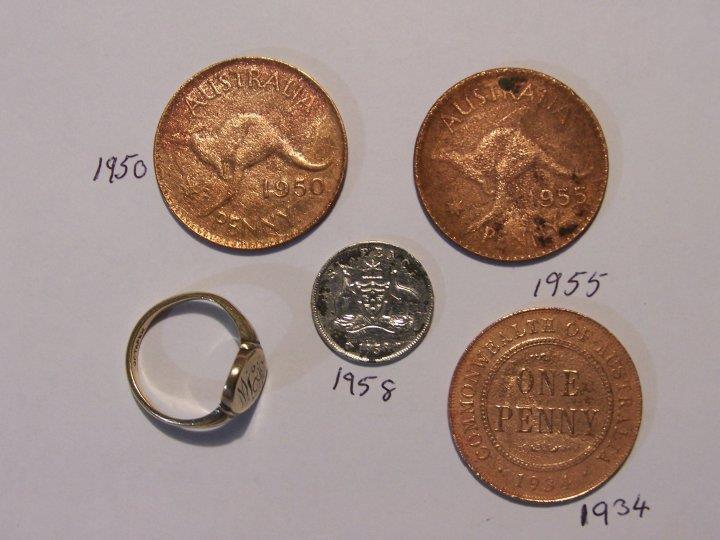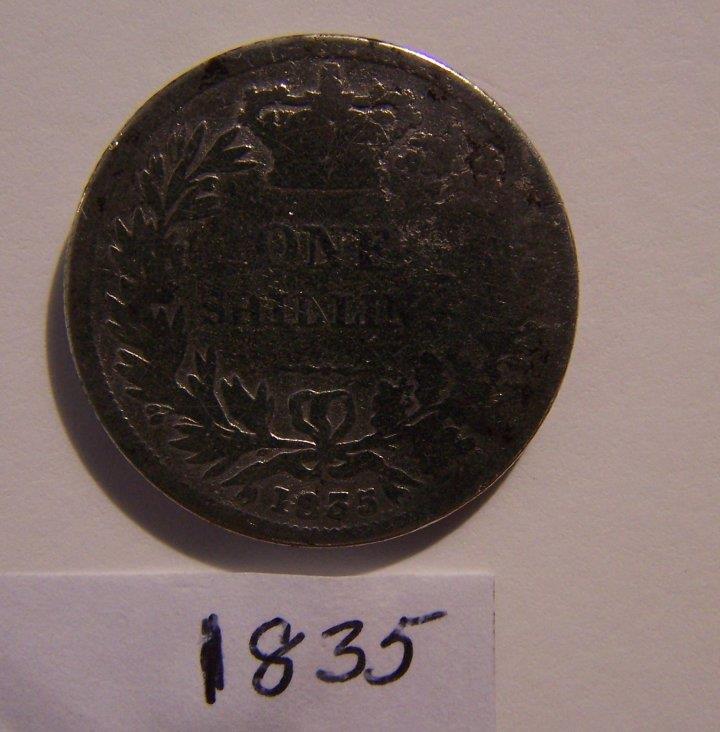I'm new to prospecting (almost two yrs.) but even newer to detecting (Nov 2012). Usually when I visit my father-in-law in the Wimmera I take my fly rod. In Jan this year the lake was virtually dry, has been since 2004 so I took my new Eureka Gold. The idea being to get in some much needed practise.
Day one, turned up some keys, ring pulls, nuts, bolts and foil from wrappers; lots of tiny pieces of it. All this rubbish was on or near the surface. Day two, I figured that I was working too close to the full level shoreline, so this morning I moved out further. This produced more of the same rubbish as the first day. The afternoon was different; going over the same area again produced some sinkers and decimals (1's, 2's 5's & 20's). All up $3.50. My father-in-law was impressed. He said that I should find some pennies as he used to dive for them, when he was a ten yr. old boy. Now I had a target. Day three, I went back to the same spot, an area about twenty metres square where I reckoned the old pier used to be. With all the surface rubbish gone detecting deeper targets was easier and I noticed I now had to dig deeper. A gold coloured ring and two pennies (1950,1955) were the treasures along with split shot, sinkers and some spinner blades. I was in the right area. Day four I only had the morning. I was now sure I had the right spot and went straight to there. Going over the area a third time turned up two more decimals (20's), a 1958 sixpence and a penny. It was a 1934 just the right age to belong to my Father-in-law.
It was a great way to learn about the detector and very surprising to find all the stuff; even more so when the guy emptying the bins said that travellers using the foreshore as a rest stop, detect the lake once a week.

The finds are not valuable by any means but it was great experience towards learning to use my machine and I have to say it was a lot of fun. I hope members find this post interesting. Cheers Bob.
Day one, turned up some keys, ring pulls, nuts, bolts and foil from wrappers; lots of tiny pieces of it. All this rubbish was on or near the surface. Day two, I figured that I was working too close to the full level shoreline, so this morning I moved out further. This produced more of the same rubbish as the first day. The afternoon was different; going over the same area again produced some sinkers and decimals (1's, 2's 5's & 20's). All up $3.50. My father-in-law was impressed. He said that I should find some pennies as he used to dive for them, when he was a ten yr. old boy. Now I had a target. Day three, I went back to the same spot, an area about twenty metres square where I reckoned the old pier used to be. With all the surface rubbish gone detecting deeper targets was easier and I noticed I now had to dig deeper. A gold coloured ring and two pennies (1950,1955) were the treasures along with split shot, sinkers and some spinner blades. I was in the right area. Day four I only had the morning. I was now sure I had the right spot and went straight to there. Going over the area a third time turned up two more decimals (20's), a 1958 sixpence and a penny. It was a 1934 just the right age to belong to my Father-in-law.
It was a great way to learn about the detector and very surprising to find all the stuff; even more so when the guy emptying the bins said that travellers using the foreshore as a rest stop, detect the lake once a week.

The finds are not valuable by any means but it was great experience towards learning to use my machine and I have to say it was a lot of fun. I hope members find this post interesting. Cheers Bob.




